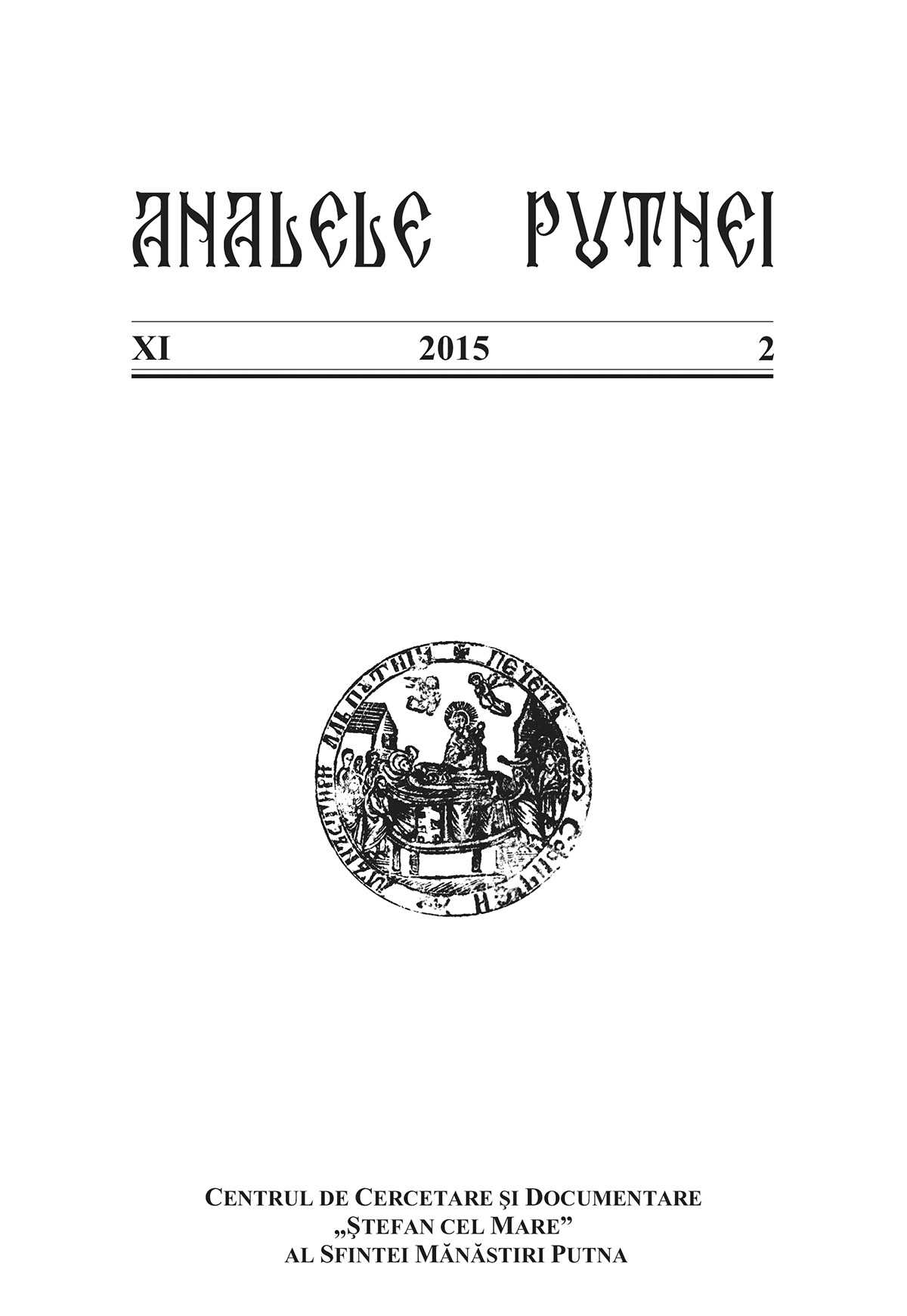Un tablou regăsit: Mănăstirea Putna înnoită de mitropolitul Iacov Putneanul
A Rediscovered Painting: Putna Monastery Renovated by Jacob of Putna
Author(s): Monah Timotei TironSubject(s): History
Published by: Centrul de cercetare şi documentare ŞTEFAN CEL MARE
Keywords: Metropolitan Jacob of Putna; 18th century; restoration; Putna Monastery; founders; topographical icon
Summary/Abstract: For Putna Monastery, the 18th century was the second flourishing period since the time of its founder. Metropolitan Jacob (1719–1778) initiated a general reconstruction of the monastic complex thus becoming ”its second founder”. The most important works aimed at recovering the functionality of the monastery began in 1756 and ended in 1761. The church, the walls of the precinct, the bell tower and the treasury tower were restored. The refectory, the Chapel of the Holy Apostles, the monks’ quarters and a well were build.Metropolitan Jacob had several close collaborators: archimandrite Bartholomew Mazereanu, starets Sila from Putna Hermitage, sacristain Nathaniel (the later hieroschemamonk Nathan) and the abbots of Putna Monastery between 1756 and 1778 (Calistrat, Benedict, Anthony, Pachomios and Josaphat).After 1761, these collaborators commissioned a painting with the consent of the new founder. For a long period of time, the painting was thought to have been lost. It depicts metropolitan Jacob and his collaborators offering the renovated Putna Monastery to the main founder, Stephan the Great, all of them looking as if prepared to partake into the Divine Liturgy.The setting is the restored monastery and its zone of influence: the entire Putna Valley, Putna Hermitage, Ursoaia Hermitage, the old wooden church, the cemetery, houses of the village, various monk cells and outbuildings.The painting measuring 89 by 126 cm is made using the mixed oil and tempera technique. It was preserved in Putna Monastery until the 19th century when it was taken to the Metropolitan See from Cernăuţi. Today it is housed in the Regional Museum in Cernăuţi. A copy was preserved in Putna Monastery until 1965 when it disappeared. The main characters and the most important buildings and places are identified by inscriptions in Romanian. All details are minutely presented. The well and the form of the wooden church help to date the painting to 1761–1768. The painter is unknown.The details, many confirmed by archaeological findings and written sources, help to document some of the monastery’s architectural transformations: the location of the refectory and the Chapel of the Holy Apostles and the form of the wooden church before the interventions of archimandrite Vartolomei Mazereanu.Organized as a topographical icon, the painting expresses the commissioner’s view of the depicted geographical territory: one sacred entity. It is an extended visual correspondent of metropolitan Jacob’s description of Putna Hermitage in a letter to archimandrite Vartolomei Mazereanu: ”it forms together with the Monastery a single household”.
Journal: Analele Putnei
- Issue Year: 2015
- Issue No: 2
- Page Range: 105-180
- Page Count: 78
- Language: Romanian
- Content File-PDF

